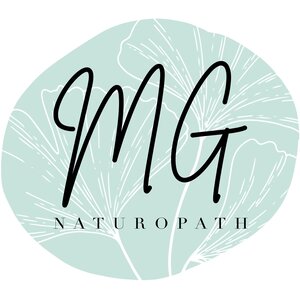One of my very first clients was a young man who we will call Finn. Finn was a professional athlete and among other things came in for something we can all relate to - burn out.
Finn's burn out was boarding chronic fatigue. His stringent training, low calorie intake to maintain a low weight and numerous injuries had all combined to push his body past breaking point. He had a very detailed clinical history, as he had been through a lot very young as somewhat of an elite athlete. He had tried a combination of herbs, supplements and body work over the years, but always treating himself without, seeking guidance from a trained professional.
I started him on a herbal mix full of adrenal support and nourishing nervous system support and immune tonics. At this point, he was feeling depressed about his body letting him down. It was easy to guess his eyes would tell me he was a person who was incredible hard on himself, a perfectionist, a workaholic and when he was out of balance, sugar and caffeine were his crux and would replace food in many cases to keep his weight below a normal range.
Within a few weeks on herbs, Finn was feeling better, he had finally shaken the never ending cold-like symptoms and his body had started to gain a sense of strength back. He started to add in some more training. Over the next year, we adjusted his herbs as needed, adding stamina and endurance into his mix but always keeping adrenal support.
It took a few months but we managed to come to an agreement on his eating habits and put together various eating plans depending on his goals. Convincing him he would need to eat more food to drop his weight and support his training schedule was one of the biggest challenges, bringing up fears around food that even surprised him. More food allowed him to increase his training, preventing injuries, exhaustion, bolstering his immune system and making it easier to drop weight when he needed.
His mental health changed dramatically in this time and his motivation and positivity returned. His brain was no longer starving. Whenever he is in Australia, Finn grabs a herbal mix, has a check up and we have a big hug. Providing the tools for long term sustainable lifestyle change, long term clients, mutual love and appreciation, these are the biggest rewards and why I am so blessed to be able to share my passion.
Another client came in with very similar symptoms to Finn. He thought his feelings were acute but as we went through his history we both realised that the last 6 years had been a challenge.
He loves to ride road bikes and would do hundreds of kilometres over a weekend. He also had an extremely high pressure job. His angry outbursts were out of character and it was affecting his marriage and his work.
His fatigue was his biggest complaint. Half way through a ride he would literally feel like he had hit a wall and would have to call his wife to pick him up as he couldn’t imagine getting home. He would then sleep for hours and have to take the next day off work. They were about to have their second baby and he is still to this day my biggest critical thinker.
Hyperactive and hyper functioning, his whole life he questions every herb I give him every supplement and every piece of advice. After three consults and still now I learned to have some piece of research/evidence or basis for what I was prescribing. I like it as it keeps me on my toes.
On this third consult, I also suggested it was time to get some blood-work as herbs were helping slightly but not enough and I wanted to know why. Luck, intuition, I’m honestly not sure but I gave him a referral to get his iron checked to start with. A process of elimination I thought would see us through numerous blood tests.
His iron was the lowest I have ever come across. A few months on now he came to a talk I gave the other day and I overheard him speaking to one of the other guests afterward. He warmed my heart with his sincerity in recommending she come and see me. He is vibrant again, colour in his face and excitedly told me about his most recent ride. He was tired, but not wiped out and he was ecstatic. Something so simple had affected his lifestyle, his relationships and his work for so long.
Not everyone’s story is life changing. Sinus infections, allergies, depression, even chronic fatigue are reoccurring manifestations. As soon as we are stressed, have large life events or are out of balance our body will go to that place that is inherently our weak spot. What we can do with herbs is support natural balance and prevent sickness before it flares.

